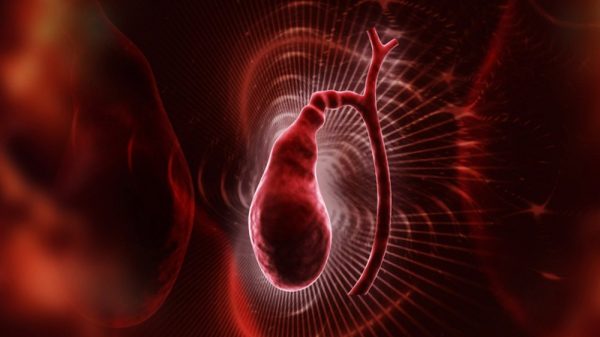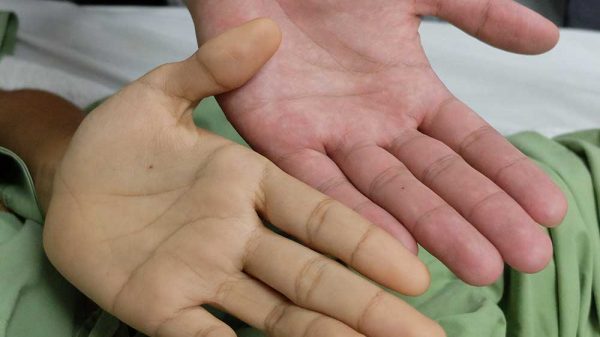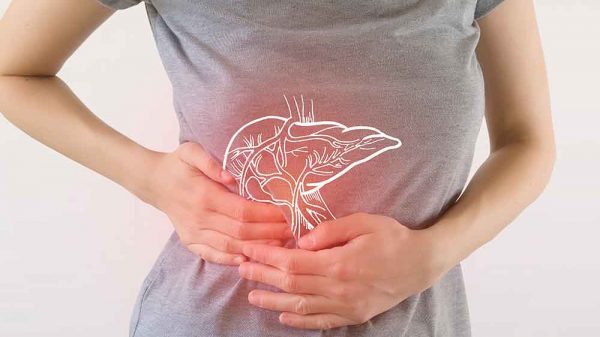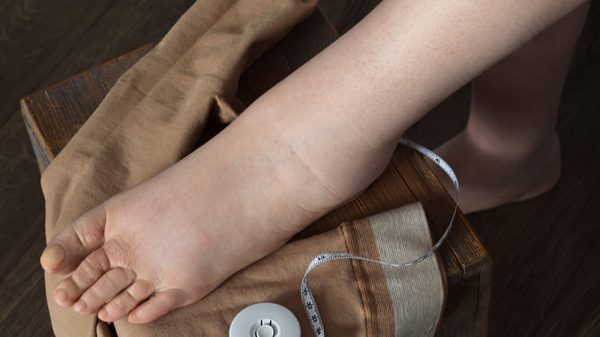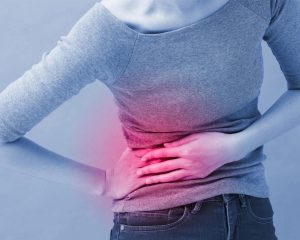Are you preparing for a sigmoid colectomy? Getting ready for major surgery such as a colectomy can be daunting. You might not know what to expect from either the procedure or the recovery process—being equipped with information about what to expect can relieve anxiety and help you prepare adequately.
If you are looking for information about how to prepare for a sigmoid colectomy procedure and how to support recovery, you have come to the right place. Here we give you everything you need to know about the process and sigmoid colon resection recovery.
What Is Sigmoid Colon Resection, Anyways?
A sigmoid colon resection is a type of bowel resection surgery that removes a particular part of the large intestine.
What is the sigmoid colon? To understand where the sigmoid colon is, let’s first discuss the different parts of the digestive system. The stomach is located higher up in the abdomen, and empty contents into the small intestines, which are responsible for further breaking down and absorbing nutrients. The colon is also commonly known as the large intestine, and it is the last section of the digestive system where waste products pass through, and extra water is absorbed. The large intestine is further divided into the right side, the transverse colon, and the left side.
The left colon is further subdivided into several sections, including the sigmoid colon. The rectum and anus are also parts of the left colon and are where stool leaves the body. The sigmoid colon is the part of the colon that is shaped like an “S” and occurs just before the rectum.
Reasons for Undergoing a Sigmoid Colon Resection
Your doctor and surgeon may recommend that you undergo bowel resection surgery due to conditions that affect the sigmoid colon. Here are a few reasons you may be a good candidate for the procedure:
- Cancer: Colon cancer or colorectal cancer describes the growth of cancerous cells within the colon. If malignant tumors grow within the sigmoid colon, complete removal of the sigmoid colon and nearby lymph nodes helps prevent the spread or metastasis of cancer. Following a sigmoid colon resection, it may still be appropriate to undergo a course of chemotherapy or other kinds of treatment, depending on your specific case of colon cancer.
- Inflammatory bowel disease: Inflammatory bowel disease (IBD) causes inflammation within the bowels. Sigmoid colon resection may be appropriate if your case of IBD affects the sigmoid colon. Ulcerative colitis is a type of IBD that causes the formation of ulcers in the large intestine, as well as unpleasant symptoms like diarrhea and cramping. Crohn’s disease is another type of IBD where sections of the bowels are inflamed, causing episodes of cramping, fatigue, bloody stools, and diarrhea.
- Diverticulitis: Diverticulosis describes the formation of small pouches along the large intestine. Bacteria flourish when stool is forced into these small pouches, which causes inflammation and infection called diverticulitis. Dietary changes and antibiotics can often help control diverticulitis. However, chronic cases may benefit from the complete removal of the affected area. If diverticulitis affects the sigmoid colon, your doctor may suggest a sigmoid colectomy.
Preparing for the Day of Your Surgery
Prior to surgery, you will undergo preoperative testing that may involve giving blood samples, stool samples, and undergoing a colonoscopy. This allows the surgeon to have a detailed understanding of your specific condition. You may also need to receive an electrocardiogram and chest X-ray, to ensure that you are in good physical shape to undergo general anesthesia.
Leading up to surgery, you will likely need to stop taking any blood-thinners, such as coumadin. Your surgeon will also ask you to ensure that your bowels are as clear as possible. You may be required to follow a liquid diet and use enemas and laxatives. Always follow all preoperative instructions carefully.
What Should You Expect During the Procedure?
The sigmoid colon resection may be performed as either open surgery or laparoscopic surgery. During either procedure, you will be under general anesthesia, which means that you will be asleep and unable to feel what’s happening during the operation.
Open surgery requires large incisions in the abdomen so that the surgeon can directly access your large bowels. The surgeon will then conduct the bowel resection surgery by removing the sigmoid colon and sewing the remaining large bowels together. The original incision will then be sewed up. When the operation is over, you will be brought to the recovery room.
During a laparoscopic colon resection, the surgeon makes a few small incisions in the abdomen. These incisions allow for the insertion of a laparoscope and surgical instruments, so the procedure can be performed with minimal cutting. Even though minimally invasive surgery is associated with less recovery time and the formation of less scar tissue, laparoscopic surgery is not appropriate for all patients. Your surgeon will be able to assess your specific condition and decide which type of sigmoid resection procedure is right for you.
Ileostomy or Colostomy
Following any colorectal surgery, it is common for the surgeon to create a stoma. A stoma is an opening in the abdominal wall where waste products can exit the body. While an ileostomy joins the small intestine to the stoma, a colostomy joins a part of the large intestines to the stoma. An ileostomy bag or colostomy bag is then connected to the stoma, allowing for the collection of waste outside of the body. Depending on your specific needs, the placement of the stoma may be temporary or permanent.
Why might an ileostomy or colostomy be necessary? Your surgeon may decide to create a stoma to help prevent infection by diverting waste products away from the area where your bowel resection is. The creation of a stoma also helps prevent a complication called an anastomotic leak. An anastomotic leak occurs when waste contents leak through a surgical join and into the abdominal cavity. In the case of the sigmoid colon resection, if stool is able to pass over a surgical join in the large intestines, a leak may occur. Since waste products in the large intestine contain a high concentration of bacteria, such leakage can cause serious infection in the abdominal cavity. Symptoms include fever, vomiting, chills, and abdominal pain. If you notice any of these symptoms, it’s critical to seek medical attention immediately.
What Will Recovery Feel Like?
A sigmoid colon resection surgery is categorized as an inpatient procedure, meaning that you will need to remain in the hospital after surgery. Your hospital stay may last for a week, depending on your progress. Immediately following surgery, you will feel very groggy and nauseous as you recover from general anesthesia. You will feel soreness and abdominal pain for a little while, though after a couple of weeks you will be feeling more like yourself. Diarrhea and loose stool are common, and normal bowel function and bowel movements will return after several weeks.
Tips for Sigmoid Colon Resection Recovery
1. Be Prepared to Take Time Off from Work and Household Duties
When you are preparing for the surgery, make sure you can get time off from your responsibilities for at least a couple of weeks. Though you will likely feel better within a week or so, it’s important that you have someone to cover you for at least two weeks. This way, you won’t feel pressured and can focus on your recovery without extra stress.
2. Gently Move Around After Surgery
Following surgery, it’s crucial to start walking around as soon as you can. Getting your blood flowing helps prevent blood clots. Blood is prone to clotting after surgeries because the body is kept immobile throughout the surgery. Your surgeon and nurses will guide you on when it is safe for you to start walking around after surgery.
3. Avoid Strenuous Activity
Gentle movement after a sigmoid colon resection is encouraged. However, strenuous activity and vigorous exercise may pull at your wounds, which can cause tearing injury to the surgical site. To make sure the recovery process progresses as quickly as possible, put off intense physical activity until after your surgeon clears you.
4. Preventing Infection
Preventing infection is an integral part of recovery. The incisions on your abdomen will likely be covered with bandages. It’s essential to keep the wound area dry and clean to discourage the growth of bacteria.
5. Pain Management
Controlling pain helps make the recovery process much more tolerable. When your pain is under control, you will be able to focus on other areas of recovery. You will be prescribed pain medications for the first week or so of your recovery. After you finish your course of painkillers, you will be able to use over-the-counter painkillers. Your surgeon will likely advise you to stick to acetaminophen and avoid ibuprofen since NSAIDs can increase the risk of bleeding and gastrointestinal irritation.
6. Attend All Follow-Up Appointments
Your surgeon will want to see you periodically following your colon resection surgery. Attend all follow-up appointments so that your healthcare provider can ensure that you are recovering as expected. You can also use follow-up appointments to address all non-urgent concerns and gain a better understanding of your post-surgery timeline.
Sigmoid Colon Resection Recovery Diet
If you’ve undergone a sigmoid colon resection, you will need to follow a particular diet for a few weeks until you have sufficiently recovered. Here are a few tips for what you should eat following your sigmoid colectomy.
1. Initially Avoid High-Fiber Foods
Avoiding high-fiber foods is particularly important if you have a stoma in place. Having a stoma causes the production of frequent, watery stools. When you are eating a soft diet, aim to limit your fiber intake initially. Too much fiber may worsen diarrhea.
2. Stick to Soft Foods
Early in your hospital stay, you will likely be restricted to a liquid diet filled with lots of clear liquids. Your nurses will also administer liquid nutrition intravenously so that you don’t become deficient in any nutrients. When you are discharged from the hospital to continue your recovery at home, you will likely need to adhere to a soft food diet. Good examples of soft foods that are also low in fiber include white pasta, soup, white bread, white rice, and eggs.
3. Get Plenty of Protein
Even if you’re following a soft diet, it’s vital to ensure that you’re getting plenty of protein. Protein is particularly crucial for expediting recovery after surgery because it offers essential amino acids. In order to support a quick recovery, it’s ideal to get optimal ratios of essential amino acids, because the body utilizes these amino acids in specific proportions. When recovering from surgery or illness, the body uses essential amino acids at an even faster rate, making protein consumption even more important.
So, what soft proteins can you eat to get the optimal ratios of essential amino acids that you need?
- Greek yogurt: Greek yogurt is packed with complete protein, meaning it offers optimal ratios of essential amino acids.
- Cottage cheese: Cottage cheese is a soft cheese that offers complete protein. It is also versatile in flavor and can be consumed with both sweet and savory flavors.
- Kefir: Kefir is a dairy-based product that offers protein as well as probiotics. Probiotics help to balance gut flora following bowel surgery.
- Fish: Fish is the healthiest animal protein that you can eat. Fatty fish like salmon and mackerel offer omega-3 fatty acids and vitamin D, both of which quell inflammation and promote efficient healing, in addition to essential amino acids. It’s also easy to mash fish into a soft texture.
- Eggs: Eggs are an excellent choice when aiming to get plenty of fiber. You can prepare eggs any way you like, such as hard-boiled or scrambled. Avoid eating raw eggs, since any potential salmonella can increase the risk of infection following surgery.
If you follow a plant-based diet, there are still ways to get optimal ratios of essential amino acids during your colon surgery recovery. It’s important to be aware that no single plant-based protein source offers optimal ratios of essential amino acids. Instead, it’s necessary to consume a few sources of vegetable protein throughout the day, to make sure that you are getting all of the essential amino acids you need to promote a speedy recovery.
- Tofu: Tofu is an excellent source of plant-based protein that is prepared from soybeans. Tofu is almost a complete protein, but not quite. Plus, it’s low in fiber. You can saute tofu and enjoy it as a soft meat substitute in your favorite dishes and stews.
- Soymilk: Like tofu, soymilk is prepared from soybeans and is high in protein. Soymilk is great plain or in your favorite smoothies.
- Peanut butter: Peanut butter is a good protein source that can be eaten on toast or crackers during the soft-food phase of your recovery. Earlier in the recovery process, stick to white toast to avoid eating too much fiber.
- Beans: Beans are high in fiber, so check with your surgeon before eating lots of beans.
- Supplements: If you are still struggling to get enough protein during the recovery process, you can add a supplement to your regimen, as long as you are cleared to do so by your surgeon. Essential amino acid supplements work well in beverages and smoothies and ensure you’re getting the amino acids you need for recovery.
4. Eat Your Fruits and Vegetables
Getting plenty of fruits and vegetables is still crucial for recovery following sigmoid resection surgery. Just aim to choose starchier vegetables that are well-cooked and skinless. Here we provide a few examples of safe fruits and vegetables to eat. However, always be sure to check with your surgeon regarding which foods should be eaten and avoided in your specific case.
- Sweet potatoes: Sweet potatoes are rich in beta carotene and vitamin C, both of which help support healing. You can eat sweet potatoes roasted or boiled, just make sure that the skin is removed.
- White potatoes: White potatoes are a good starchy vegetable to eat when you’re recovering from bowel resection surgery. Just be sure to remove the skins.
- Beets: Boiled beets are packed with vitamin C, manganese, and antioxidants to support healing.
- Carrots: Cooked carrots offer lots of beta carotene, which is an antioxidant that helps promote healing.
- Apples: Apple sauce or stewed apples with the skins removed is a perfect post-surgery snack.
- Peaches: Choose canned or cooked peaches with the skins removed.
- Papaya: Papaya contains enzymes that facilitate protein digestion, which is very beneficial for the absorption of amino acids following surgery.
- Melon: Try watermelon, cantaloupe, and honeydew after a bowel resection surgery.
- Bananas: Ripe bananas work well in smoothies, with peanut butter, or simply plain.
5. Avoid Eating Large Quantities of Food
It’s important to avoid eating significant quantities of food in one sitting. Not only will this overwhelm the digestive system but also put pressure on the healing part of your bowels. Stick to eating small meals or snacks on a regular basis.
6. Eat Slowly
Eat at a slow pace to help your digestive system break down food and to ease the pressure on your bowels. Take small bites and chew deliberately, to help manually break down as much food as possible.
7. Drink Plenty of Fluids
With all of this focus on foods, it’s essential to discuss the importance of staying hydrated throughout the recovery process. Following bowel resection surgery, you are at an increased risk of experiencing dehydration because normal bowel function may not return for several weeks. The bowels are normally responsible for absorbing extra water from waste products. Your risk of dehydration is further increased if you have a stoma in place since a stoma can cause persistent diarrhea.
You can counteract dehydration by drinking plenty of water as well as electrolyte-containing fluids. Gatorade, Pedialyte, and chicken broth are excellent options for helping your body maintain proper electrolyte levels. Increasing your salt intake also helps the body hold onto water.
Keep in mind that it’s important to avoid chugging large amounts of fluid. Try drinking small quantities of fluid on a regular basis throughout the day.
Things to Keep in Mind
Each person’s recovery timeline and diet requirements might look a little different. Make sure you check with your surgeon about exactly what foods to avoid and when you can engage in exercise. Your surgeon and nurses will also provide information about when you can start introducing more solid foods into your diet. Additionally, always check with your healthcare providers about starting new supplements.
Sigmoid Colon Resection Recovery: Conclusion
Being armed with information can help you progress through the recovery process as smoothly and as comfortably as possible. When recovering, make sure to drink plenty of fluids, avoid intense physical activity, and follow a soft diet that’s full of protein and vitamins. After recovery, you’ll be able to resume your normal activities in no time.


